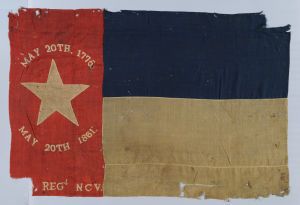“Stonewall” Jackson’s Tree Climber: William S. Hood

John Bell Hood is easily the most famous man with that surname to serve in the Civil War. Not a close second, but a second nonetheless–especially for “Stonewall” Jackson and Antietam students–might be William S. Hood of the 35th North Carolina Infantry. You’ve never heard of him? You might have heard at least part of his story, though.
During a lull in the Battle of Antietam, Jackson reined his horse up in front of Col. Matt Ransom of the 35th North Carolina. The stern general told Ransom “to advance and take a battery that was in sight.” Leery of the chances of success, Ransom said “he would so do if ordered it,” but not otherwise. Ransom believed a large force of the Federal army was behind the enemy battery. Jackson wanted to gather more information. Suddenly changing topic, he asked Ransom, “Have you a good climber in your command?”
Ransom issued the odd call to answer Jackson’s query. Private William S. Hood volunteered to climb “a tall hickory tree” in the West Woods that Jackson selected. As Hood climbed barefooted under fire of enemy skirmishers, Jackson remained mounted on his horse at the tree’s base, and yelled up to the ascending Hood: “How many troops are over there?” “Oceans of them,” Hood screamed back, to which Jackson retorted, “Count the flags, sir!” Thirty-nine was Hood’s audible count, which stopped upon Jackson saying, “That will do, come down, sir.”
This tale has been repeated in several well-known Civil War books, including James Robertson’s masterful biography of Jackson and Joseph Harsh’s Taken at the Flood, a study of the Army of Northern Virginia in the Maryland Campaign. While this episode is the most detailed of Hood’s life, there is more to him than his tree climbing escapade on September 17, 1862.
Hood enlisted in Company H, 35th North Carolina Infantry from Mecklenburg County at the age of 17. His listed occupation was a farmer. Hood’s captain, D. G. Maxwell, described him as “a handsome boy” with “black eyes, long black hair, fair skin, indeed a noble type of a Southern lad. He wrote a beautiful hand and the writer often had him detailed to assist in making out reports, pay rolls, etc.”
Despite his natural skill at clerk’s work, Hood grew up fast in the ranks. A Federal bullet that struck him at the Battle of Malvern Hill knocked him out of action for two months; he rejoined his comrades on the eve of their crossing into Maryland.
His daring heroics under Jackson’s and Ransom’s eyes at Antietam earned him a role as one of Brig. Gen. Robert Ransom’s (Matt’s younger brother) aids and couriers. When one member of the 35th North Carolina saw Hood trailing behind Ransom a few days after Antietam, Hood supposedly had “spurs on his bare feet.” Hood continued in this role for much of the war. “He was one of the best couriers,” a comrade remembered of him, “prompt to carry orders, under all circumstances trustworthy and fearless.”
Hood’s role as a staff officer could not preserve him through the entirety of the war, though. Weeks before the war’s end, Hood fell in the Confederate assault on Fort Stedman on March 25, 1865. General Ransom respected Hood greatly enough that he “clothed the body of the brave boy in a general’s uniform and laid it tenderly in a grave far from the home of his childhood, in old Mecklenburg County.”
A sad end to a noble lad.